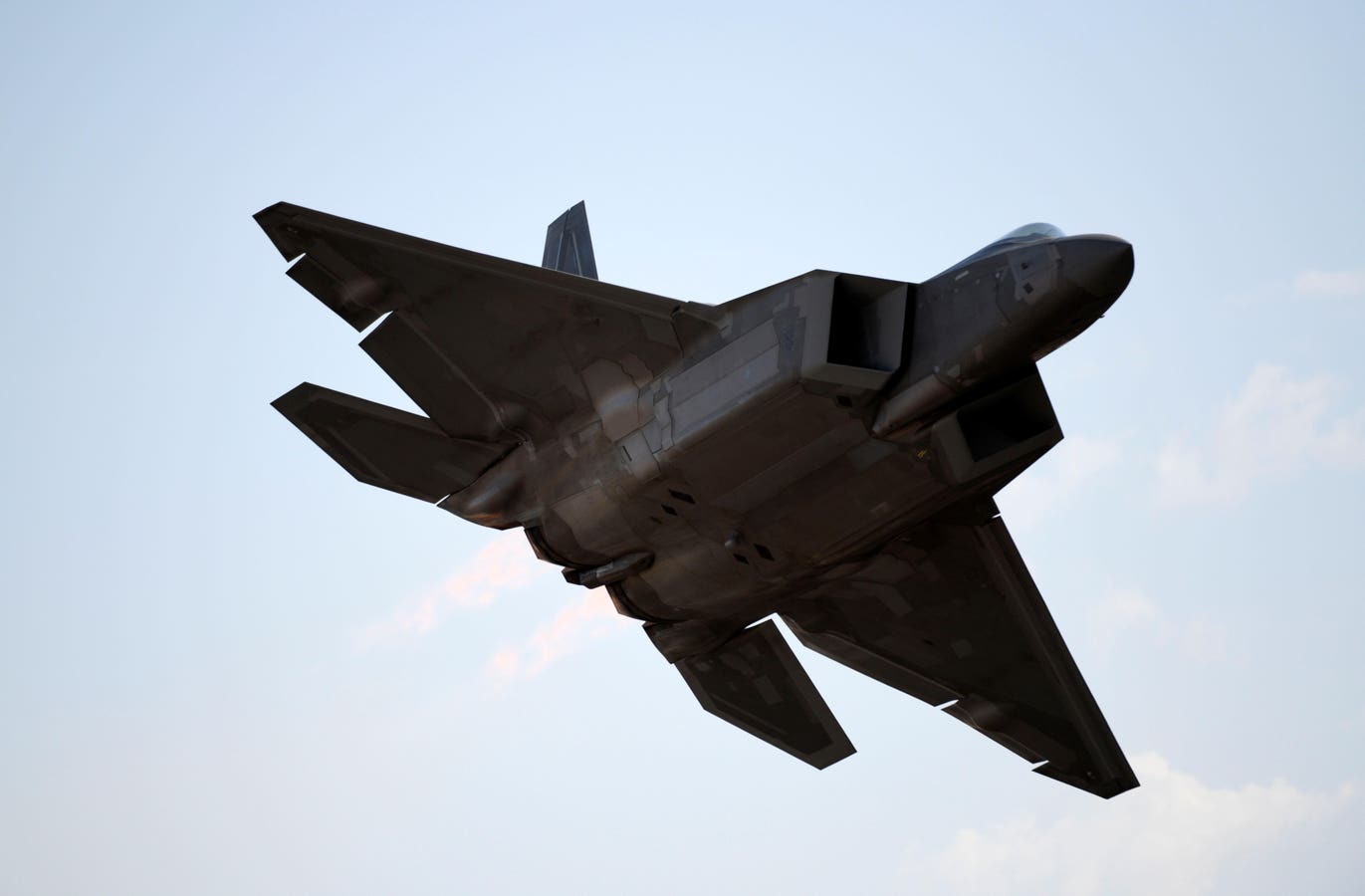- Thread starter
- #21
Wild_Bill_Kelso
Senior Master Sergeant
- 3,231
- Mar 18, 2022
I think the F-22 can be used for dogfighting though I might be wrong.
Oh it can, and it has good sensors etc., but apparently, there are other issues.
Follow along with the video below to see how to install our site as a web app on your home screen.
Note: This feature may not be available in some browsers.
Ad: This forum contains affiliate links to products on Amazon and eBay. More information in Terms and rules
I think the F-22 can be used for dogfighting though I might be wrong.
Actually, no it isn't. It is from analysis of decades of research.That derives from a quote by Eric Hartmann and while there is some truth in it, it has been exaggerated.
Actually, no it isn't. It is from analysis of decades of research.
At this stage the GE XA-100 is simply a demonstrator that GE hopes might be introduced into service by 2027. They have hopes of replicating the F110 vs F100 scenario of the 1980s onwards. That said, they also had hopes that the F136 would have done that but things got dashed years ago. There is no guarantee that will have any more luck this time.it's about learning about the A-100, how close is it to the projected capabilities, how soon will it be available, etc.
Having very briefly worked on the program and spending a lot of time with those who developed the X-35 and later worked on the F-35, this is a total myth. Getting everything "in sync" is and was the big issue. The aircraft was designed as a STRIKE aircraft, it's air superiority role is secondary.I think the F-35 is trying to be too many things at once, they have clearly had some issues with it (no big secret) and isn't probably ideal for the air superiority role.
I'm not - every so many years the Chinese pump out some new fighter to challenge the west and they wind up building just a handful. Right now the J-20 has some engine issuesI'm in particular concerned about Chinese aircraft like the J-20. Along the lines of (flying / operational) range, and striking range in particular.
Again the F-22 was designed for the air superiority role from the get go. IMO it's the premier air to air combat plane in the world but has a dismal FMC rate and turning into a maintenance nightmare from what I'm hearing from some of my active duty sources.The F22 is more suited for the air superiority role but apparently there are serious computer and software problems with F22 which can't be resolved (at least, from what I read) which is basically why the program had a short production life and not too many are flying.
AgreeWhere F-35 is potentially going to be prove to be exceptional is when the integration with un-manned / drone aircraft is working and fully functional. For all I know it already is and just not being publicized yet.
AgreeThe XA-100, if it's really going to work as advertised, would confer extra range which would be extremely helpful, more thrust which I think F-35 could definitely use, and the extra electrical power could obviously come in handy for all the 'extra' things that F-35 is supposed to be capable of (which is supposed to be one of the key features of the design).
Having? It did, but a lot of that was media induced and the half-witted comments made by Pierre Sprey didn't helpI see F-35 as having a fairly rough rollout, as we have seen with many other aircraft over the years, some of which ended up being great assets, often after a few tweaks.
That's the point of having superior weaponsA new engine could be a major boost to the program I think. And as it looks like we may be heading into conflict over Taiwan in the not too distant future, and are already in a very fraught proxy war with Russia in Ukraine and elsewhere, not to mention other conflicts brewing (NK, Israel / Iran) I'd really like to see the US holding a significant Tactical advantage. It might even help prevent war.
That's a stretch - The F-35A and B were wanted by the USAF and the USMC. The F-35C did have issues and some folks had reservations about the aircraft, but once they realized it's capabilities, much of that negativity has changed.The F-35 reminds me a bit of the SB2C. Initially, it was very disliked by crews and commanders, and had a ton of problems, partly related to the Navy wanting to cram a lot of capabilities into an aircraft that had to fit in a small WW2 aircraft elevator,
You can't come close comparing the development of a WW2 dive bomber to a modern strike aircraft!!!!partly due to problems that the manufacturer was having. The result was a plane that was too heavy, too short, and had a lot of stability and handling problems. They made a lot of changes, one of the most important of which was putting in a more powerful engine, the R-2600-20, with a new four bladed propeller. This gave it additional power which made the aircraft into a much more reliable strike asset, and allowed the planes other good traits (internal bomb bay, heavy armor and armament, relatively high speed) to prove telling. In the end it was effective for the US Navy and sunk a lot of Japanese ships.
We did - the F-14 and F-22 prototypes crashed. The F-16's first fight was not planned and it also landed wheels up. The First F-18s had cracks in their vertical stabilizers months after entering service. These are from memory, I could on.I think we had some teething issues with some ultimately far greater aircraft as well, like the F4 phantom. I'm hoping the F-35 will follow a similar trajectory.
This was done because of politician's ROE's, in an unrestricted conflict the goal is to kill you opponent BVR, if you don't do that you either are fighting under someone's rules, you had some equipment fail or you pissed away several million dollars of technology that could have saved your life!That derives from a quote by Eric Hartmann and while there is some truth in it, it has been exaggerated. Maneuverability, performance, climb and dive, roll, all mattered a great deal to WW2 fighter pilots and did decide the outcomes of many engagements. They took the guns out of the fighters in the 50s and damn sure had to put them back in during Vietnam, and they created the Top Gun school for a reason.
And there were. And if the air war in Vietnam was allowed to be fought unrestricted to begin with, the US just should have bombed all NVAF airfields, instead, very smart warriors came up with stuff like this that probably saved some lives because of some politician's ROEsWell, I think there were also some issues with the early generation AAMs, especially the sparrow
Now that is playing chess.And there were. And if the air war in Vietnam was allowed to be fought unrestricted to begin with, the US just should have bombed all NVAF airfields, instead, very smart warriors came up with stuff like this that probably saved some lives because of some politician's ROEs

OPERATION BOLO
Led by Col. Robin Olds, OPERATION BOLO used a brilliant deception tactic that destroyed half of the North Vietnamese MiG-21 fighter force, with no USAF losses.In late 1966, the USAF was not permittedwww.nationalmuseum.af.mil
What is needed is an eventual replacement for the F-22 that can be sustained and has growth potential. The F-15EX will be a great stopgap and asset for several more years. Lastly we need a CUAV that can be integrated into a "wingman" operation with all operational fighter/ strike aircraft being used by all branches of the military.
I think the F-22 can be used for dogfighting though I might be wrong.
Which are?



 www.forbes.com
www.forbes.com
Well some men can be just as dumb!Hahahahahaha, yeah that's always a factor. But I'm not relying on ladies like that for all my news sources personally. Like many here, I have friends in the service and in the industry in various places.
Called "Mission Capable Rates" or "Fully Mission Capable Rates." This was pulled from the Air Force Times. The F-35 is "allegedly" doing way better than the F-22." Now when looking at these rates, there are many factors that have to be looked at (scheduled and non-scheduled maintenance, modifications and depot level occurrences)Issues frequently mentioned include difficulty in upgrading computer and software, difficulty in integrating new digital systems of the type the F-35 is known for, maintenance problems and low availability rates, and some other things like the bizarre O2 system issues that seemed to plague so many.

It seems they solved the oxygen system problems with MQ-9A's.Called "Mission Capable Rates" or "Fully Mission Capable Rates." This was pulled from the Air Force Times. The F-35 is "allegedly" doing way better than the F-22." Now when looking at these rates, there are many factors that have to be looked at (scheduled and non-scheduled maintenance, modifications and depot level occurrences)
View attachment 674294

US Air Force fleet’s mission-capable rates are stagnating. Here’s the plan to change that.
The Air Force has spent the past four years making a concerted push to ready its planes for war. It’s gained almost no ground.www.airforcetimes.com
Called "Mission Capable Rates" or "Fully Mission Capable Rates." This was pulled from the Air Force Times. The F-35 is "allegedly" doing way better than the F-22." Now when looking at these rates, there are many factors that have to be looked at (scheduled and non-scheduled maintenance, modifications and depot level occurrences)
EDIT - no USAF asset is expected to have a100% MC rate
View attachment 674294

US Air Force fleet’s mission-capable rates are stagnating. Here’s the plan to change that.
The Air Force has spent the past four years making a concerted push to ready its planes for war. It’s gained almost no ground.www.airforcetimes.com